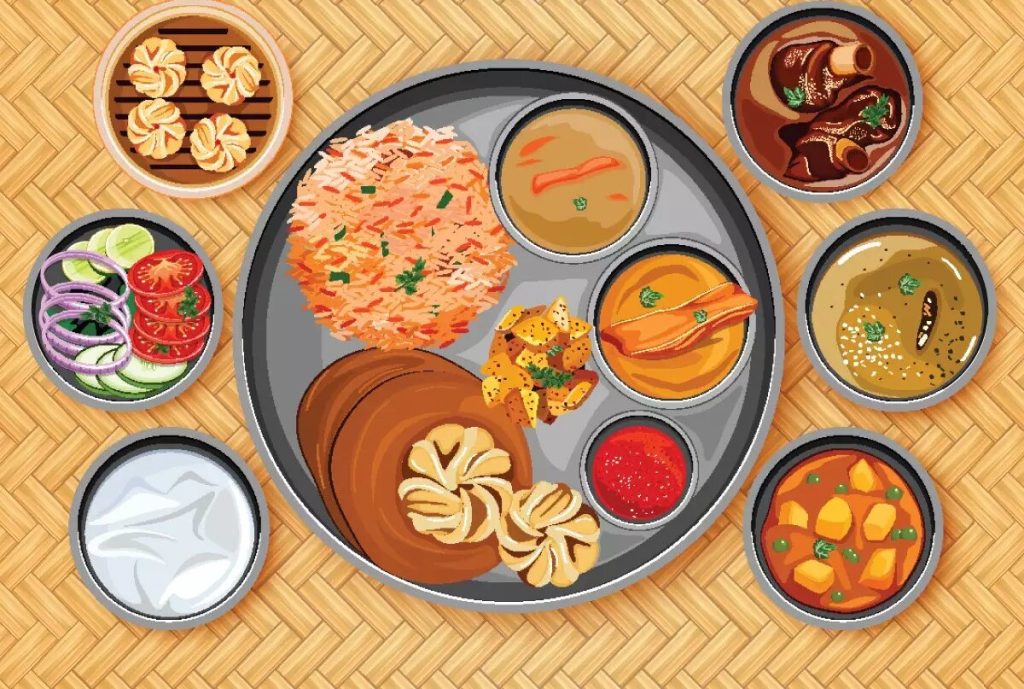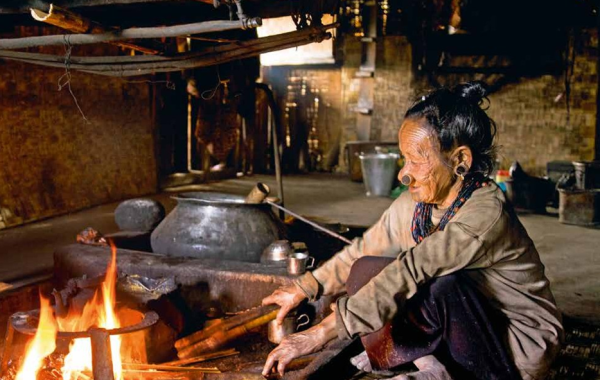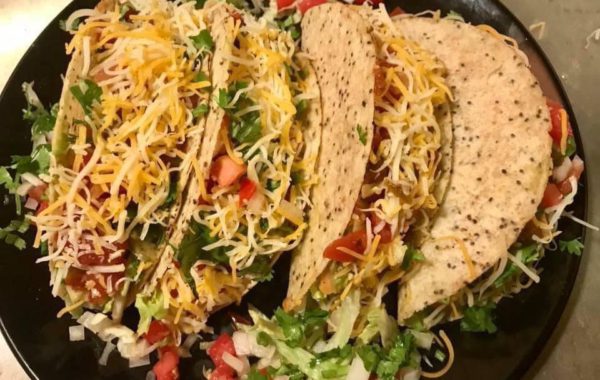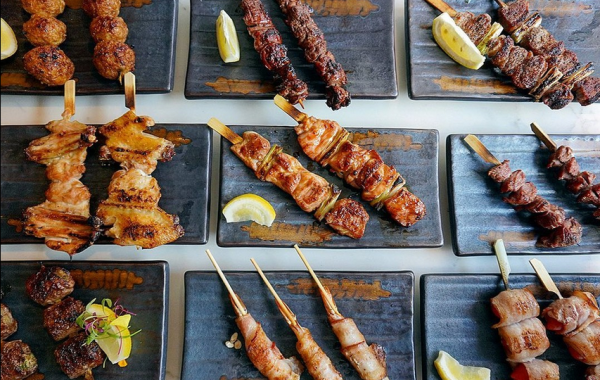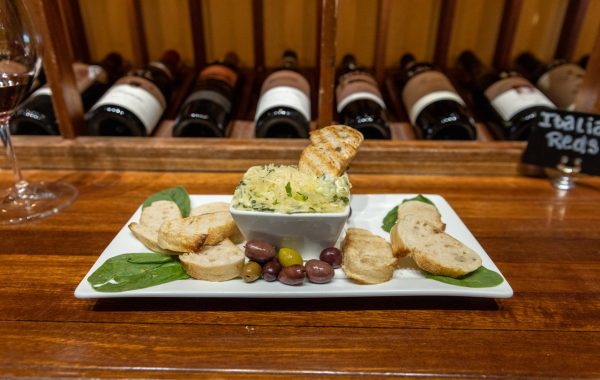Journeying Through Arunachal Pradesh’s Culinary Landscape
Located in India’s northeastern tip, Arunachal Pradesh is a mosaic of various ethnicities and cultures. Its rich diversity is eloquently echoed in its culinary offerings, which are a harmonious fusion of tribal traditions and the bounty of local ingredients. While the Arunachalee culinary palette leans heavily towards non-vegetarian dishes, particularly those centered around locally-sourced meats, green vegetables are also a significant component. The emphasis on the freshness of dishes is notable, but in a juxtaposition, many ingredients like meat and bamboo shoots are often dried, smoked, or fermented to preserve them for future use. While many dishes in Arunachal Pradesh are ubiquitous among its tribes and regions, subtle variations can be found as one travels across the state. Furthermore, certain dishes, deeply rooted in specific tribal traditions or regions, enjoy widespread popularity throughout the state.
Here are some distinct culinary features and dishes from the state of Arunachal Pradesh:
SNACKS AND CHUTNEYS
The typical Arunachalee often pairs their food with chutneys or pickles. Almost every dish and meal is enriched with these accompaniments, elevating the culinary journey. Given their high tolerance for spice, many Arunachal chutneys pack a fiery punch, potentially overwhelming for newcomers. The supremely spicy King Chilly, found naturally across the state, is an integral component in many local recipes. Some notable snacks and chutneys include:
- Khapse: Originating from regions like Tawang, West Kameng, Mechuka in West Siang, and Tuting in Upper Siang, this is essentially a sweet biscuit. It’s a staple during Losar celebrations and weddings.
- Bay: Predominantly savored by the Puroik tribe and known as Sakap by the Nyishis, this breakfast or snack dish is derived from Tassa, the inner substance of the Rangbang (Sago palm) stem.
- Bamboo Shoot Pickle: While bamboo shoot is a key ingredient in local dishes, this pickle version borrows techniques from external cuisines and incorporates some non-native ingredients.
- Byak/Byake Chutney: Byake, akin to Thai eggplant, is commonly consumed as a chutney accompanying main dishes.
- Lukter: A staple in Arunachalee households, Lukter (or Yamter/Dakter) consists of dried chillies and dried/smoked meat.
- Pehak: One of Arunachal’s famed dishes, Pehak, combines fermented soya bean and King Chilly for a spicy chutney.
- Papuk: Crafted from banana blossom, this nutritious chutney offers both flavor and health benefits.
- Meuouk Taam: A pure, organic tomato chutney.
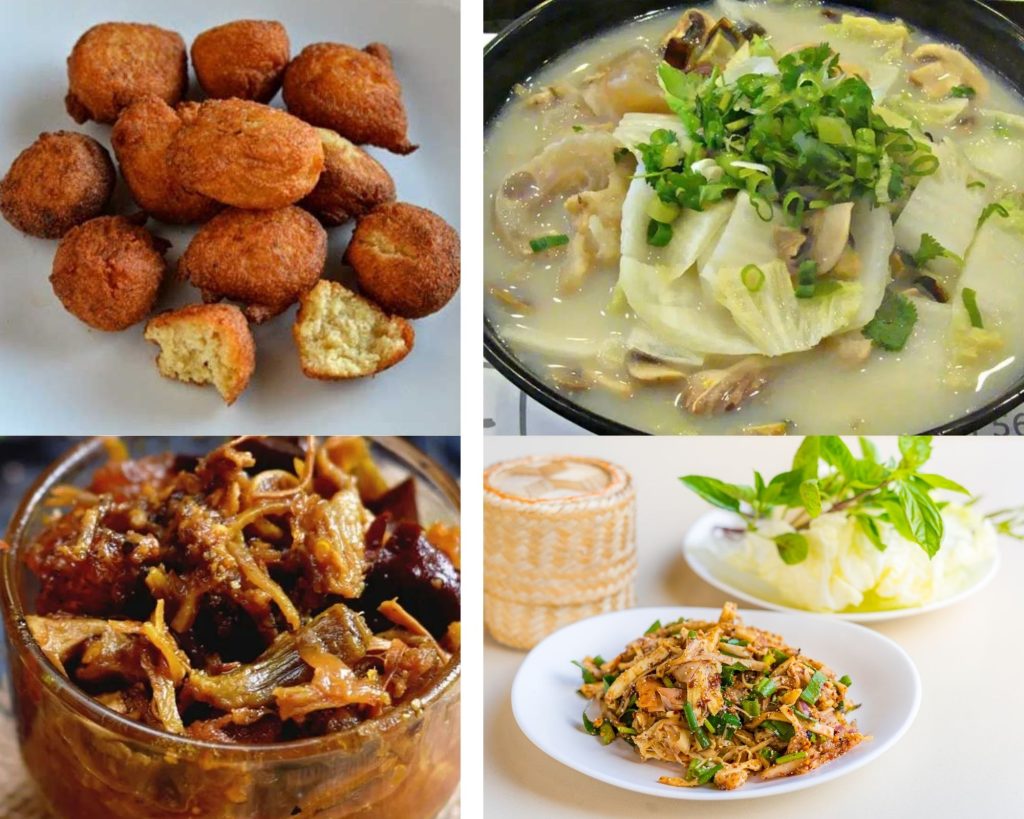
RICE
For the residents of Arunachal Pradesh, rice holds the place of honor on their dining tables. While meats, gravies, and chutneys complement their meals, it’s rice that remains indispensable, marking the meal’s authenticity. This reverence for rice has inspired the locals to innovate and diversify its preparation methods. Here are some renowned rice dishes:
- Khaow Nam Paak (rice with chicken or fish): A specialty of the Khampti tribes, it’s often dubbed the “Khampti khichri.” It bears resemblance to risotto in its texture and richness.
- Kaaji (rice enriched with pork fat): Hailing from the culinary traditions of the Apatani Tribe in the Lower Subansiri District, this dish epitomizes comfort food.
BAMBOO SHOOTS
Bamboo shoots are a staple in Arunachali cuisine. Often fermented, they infuse dishes like curries and chutneys with a unique flavor. The myriad ways in which bamboo shoots can be prepared—whether fresh, fermented, dried, or pickled—add to their appeal. They can enhance both vegetarian and non-vegetarian dishes or stand out as a dish in their own right. In Arunachal, almost every household, particularly those of the Tani ethnic group, considers bamboo shoots an essential kitchen ingredient.
VEGETARIAN FARE
While at first glance the native Arunachalee might appear predominantly meat eaters (a not entirely false impression), greens and veggies hold a significant place in their meals. In every dining experience, the primary meat dish is often accompanied by or infused with vegetables or followed by a distinct vegetable dish. Some notable vegetarian specialties include:
- Khunchang-Tok (Banana Blossom): A unique preparation by the Tangsa tribe from Changlang District, this dish demands detailed preparation and a specific cooking technique.
- Hokka Pada: Hokka Pada also known as Dhekia Saag in the region, stands out as another well-loved vegetarian dish in Arunachal Pradesh.
- Oyik Aao (Local Green Leaf Vegetable): Widely enjoyed throughout the Tani region of Arunachal Pradesh, this leafy green dish is a favorite.
- Tho Phan (Boiled Beans): A straightforward yet nutritious Khampti dish made of boiled beans.
- To Doh (Spiced Yam): A breakfast delicacy, this dish stands out among the Nocte tribe residing in Arunachal Pradesh’s eastern Tirap District.
FISH DELICACIES
With its vast rivers, rich biodiversity, and generous geography, Arunachal Pradesh boasts a remarkable aquatic ecosystem. Such a lush environment yields an array of freshwater fish species, making Arunachal Pradesh’s inhabitants naturally inclined towards piscatorial delights. Some distinguished preparations include:
- Ngui / Mui Ramnam (Smoked Dried Fish with Hiyub) – Across Arunachal Pradesh’s tribes, smoked meat/fish stands out, either as a culinary technique or a preservation method.
- Anu-Nu (Rice Dish with Fish/Chicken) – An Idu-Mishmi delicacy, this dish masterfully blends methods like boiling and frying.
- Ngah Weeh (Nocte Style Steamed Fish) – The Noctes, residing in the eastern Tirap district, share cultural similarities with the extensive Naga communities in Nagaland and neighboring Burma.
- Ngolum (Fish Cooked in Hollow Bamboo Tubes) – Originating from the Galo tribe of the West and Lower Siang Districts, this cooking style, with its unique variations, is popular among all the state’s tribes.
- Paa-Pho (Small Fish with Dried Bamboo Shoot) – A signature Khampti dish; its preparation method differentiates it despite shared ingredients with other state cuisines.
- Kong E Penam (Fish Cooked in Bamboo Tube) – An authentic Adi recipe, this method of cooking is widespread throughout the Tani region.
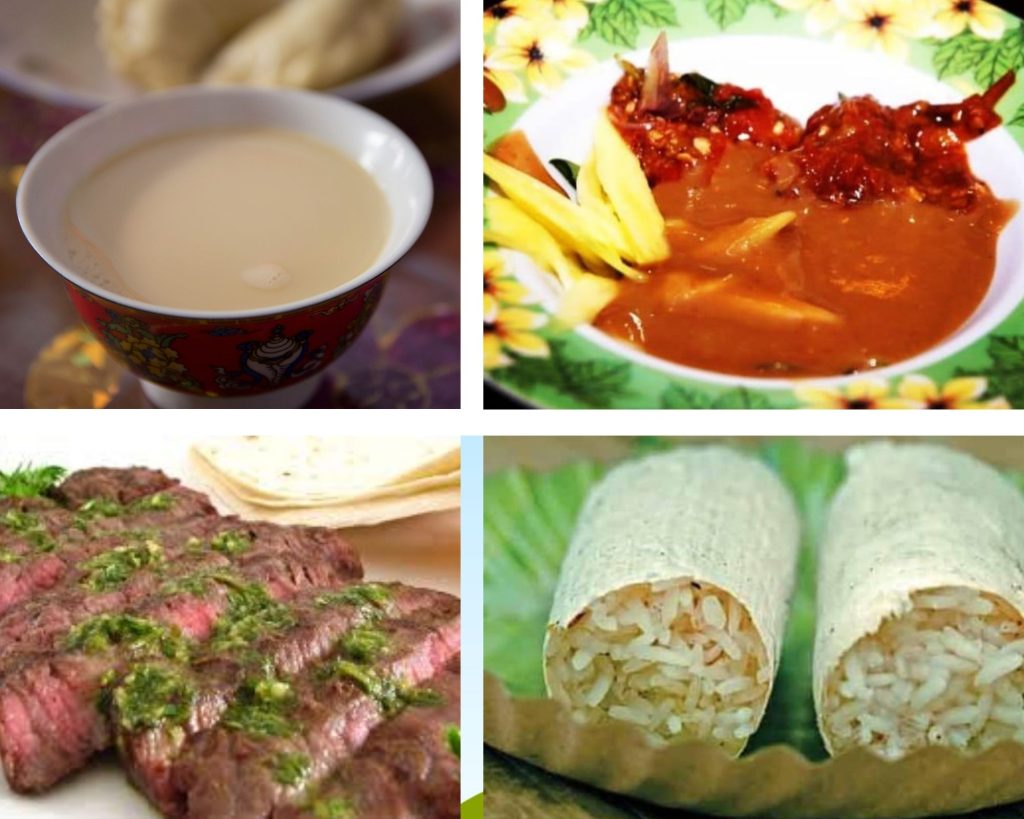
CHICKEN DELIGHTS
Across the landscapes of Arunachal Pradesh, chicken holds a distinguished spot in local gastronomy. This universally cherished meat is a staple, given its versatility and ease of preparation that aligns with numerous flavors and techniques. Hichur Porok Adin, a chicken stew with fermented bamboo shoot, is as ubiquitous in Arunachalee homes as ‘Dal-Chawal’ in the rest of India. A few notable chicken preparations are:
- Wongam – Tok (Chicken Cooked In Stone) – A culinary masterpiece from the Tangsa tribe of Changlang District.
- Aamin (Rice & Chicken Porridge) – A delicacy by the Galo tribe, primarily from the West and Lower Siang Districts.
- Naokai Sae Khawpong (Chicken with Rice Gravy) – A Khampti dish that distinguishes itself with its rich gravy, unlike many local chicken recipes.
- Ato (Boiled Chicken with Bamboo Shoot) – Crafted in the kitchens of the Idu-Mishmis from the Dibang and Lower Dibang Valley Districts.
- Asumbi (Chicken Rice Porridge) – An Idu-Mishmis specialty, Asumbi combines contrasting ingredients into a harmonious, flavorful treat appealing to many.
PORK DISHES
Among the many flavors of Arunachal Pradesh, pork stands out as a favored choice, showcased in diverse preparations by the myriad tribes residing in the state.
- Penam Arak Adin (Pork in Hollow Bamboo) – A Tani culinary tradition, this dish can grace the table as an appetizer or accompany rice as a main.
- Raar Arak Adin (Pork Stew with Regional Greens): As one travels through the state, this dish morphs subtly in flavor, influenced by varying cooking techniques and the selection of indigenous greens.
- Bhanam Arak Adin (Pork Roast with Tomato Raar Chutney): A harmonious blend of traditional Arunachalee essence with contemporary touches, this roast doesn’t anchor itself to a specific regional palate.
- Nau Moo Phan (Herb-infused Pork): With origins in the Khampti tribe’s kitchens, this dish is a testament to the union of pork and local herbs.
- Pikey Pila (Pork with Fermented Bamboo): As an iconic dish of the Apatani tribe from Lower Subansiri District, Pikey Pila holds a revered spot in the culinary world of Arunachal.
- Maiche Zaan (Wancho Pork Sausages): A savory offering from the eastern reaches of the state, this dish is a creation of the Wancho tribe.
MITHUN AND BUFFALO MEAT
Arunachal Pradesh hosts three significant bovines: the Yak, Mithun (Bos Frontalis), and Water Buffalo. These animals are vital protein sources for the region’s residents. The Yak primarily inhabits the western districts of Tawang and West Kameng, while the Water Buffalo is prevalent in the eastern districts like Lohit, Tirap, Changlang, and Longding. The Mithun, dominant in the state, is mostly found in the central region known as the Tani belt. Some popular dishes include:
- Saeb Dingho: At its core, this dish features mithun meat, which undergoes a transformation through drying and smoking, strategically positioned just above the fireplace on a wooden structure.
- Nau-Shaa (Buffalo Meat Minced): A meat delicacy courtesy of the Khampti tribe.Top of Form
BEVERAGE
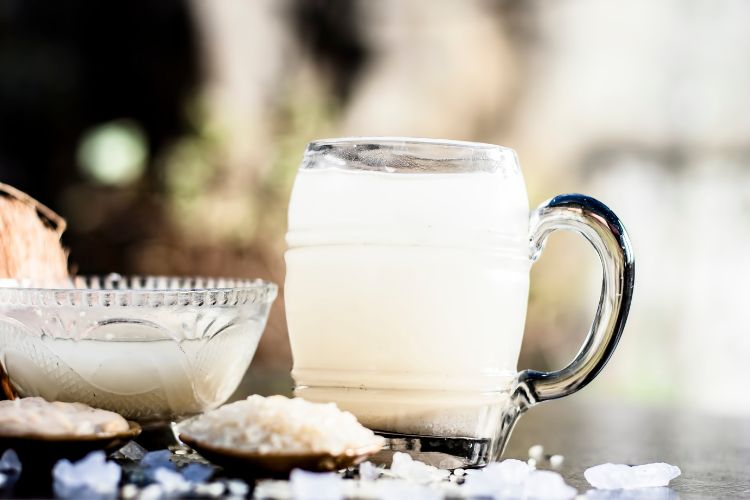
Apong, one of the most popular beverages, is a traditional rice beer of Arunachal Pradesh. This fermented beverage is not just a drink but an integral part of the socio-cultural life of the indigenous communities in the state. Some varieties of Apong are:
- Nogin/Pona: Nogin or Pona is a variety of Apong made from rice, water and local yeast.
- Tamii/Temey Opo: While the Tani belt is home to this unique drink, numerous organic, rice-based alcohols thrive across the state. However, only a handful, like this, use millet as a core ingredient.
- Pobor Poka: Esteemed during festivals and notable events, ‘Pobor Poka’ or the more colloquially termed ‘Poka’, stands out as a drink cherished by the Galos and the Adis.
- Ja (Butter Tea): Amidst Arunachal Pradesh’s beverages, butter tea carves a singular niche. Its dairy base sets it apart, as does its non-alcoholic nature. This brew is a hallmark of the state’s Buddhist territories, spanning regions like Tawang, West Kameng, Mechuka in West Siang, and Tuting in Upper Siang.
The Arunachalee cuisine, like many tribal cuisines in India, is simple, wholesome, and full of natural flavors. It’s not too spicy but relies heavily on local herbs, organic produce, and traditional methods of cooking, which give it a unique flavor profile. As you move from one tribe to another or from one region to another within Arunachal, you’ll find different variations of these dishes and unique additions, making the culinary journey through the state an exciting and diverse experience.
In Partnership with Arunachal Pradesh Tourism
For the latest travel news and updates, food and drink journeys, restaurant features, and more, like us on Facebook or follow us on Instagram. Read more on Travel and Food Network
Related Coverage
Discover The Beauty Of Arunachal Pradesh Through Bird And Butterfly Spotting
Trekking The Seven Lakes In Arunachal Pradesh
Orange Festival of Music and Adventure | Arunachal Pradesh
A New Yorker at heart, an unapologetic anglophile, national parks explorer and former head of National Geographic publishing in India, Ritika is the Global Editor for Travel and Food Network and leads all journalism across platforms, including news, digital, videos, and social media. She writes features focused on narrative storytelling, industry trends, destinations, culinary travel, and how-to advice and is an advocate for sustainable travel. You can follow her on Instagram @newyorkeratheart


